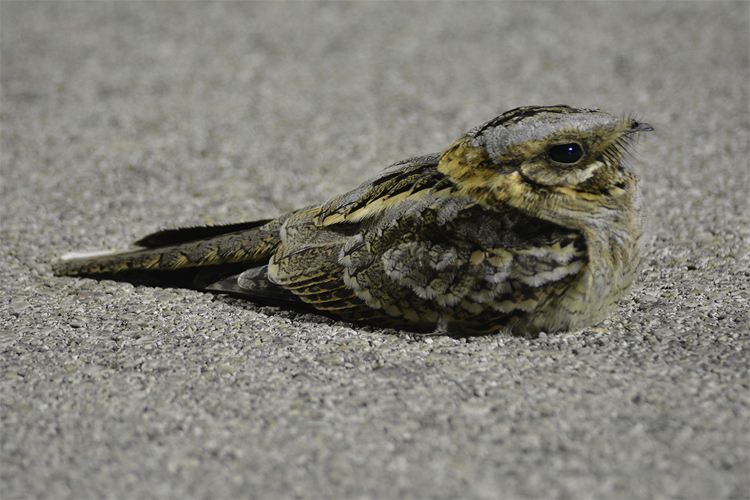Diet studies provide basic natural history information to understand food web dynamics. However, measuring the dietary breadth of rare, elusive species is extremely challenging due to their scarcity and/or cryptic behavior. Here, for the first time, an uncommon predatory interaction –nest predation– between two of the most elusive and rare species in Europe, the Iberian lynx and the red-necked nightjar is documented. Data on individually tagged nightjars and photo-traps were analysed together to investigate the underlying conditions that might have facilitated the fatal encounter. Human-induced changes in the landscape in 2014–2016 forced nightjars to travel relatively large distances (1–2 km) from the nest to find food, which translated into considerably longer nest absences compared with previous years (2011?2012). This fact, together with a drastic decline in wild rabbit populations, the main prey of lynx, might lead lynxes to search for alternative food resources, such as unconcealed –and easily detectable– bird nests. These results provide new data about the trophic ecology of this threatened predator and suggest that anthropogenic landscape changes may affect predator-prey relationships in unexpected ways. informacion[at]ebd.csic.es Sáez-Gómez et al (2018) Landscape change promotes the emergence of a rare predator-prey interaction. Food Webs https://doi.org/10.1016/j.fooweb.2018.e00078


 Las altas temperaturas están provocando que las lagunas y las marismas de Doñana pierdan agua rápidamente
Las altas temperaturas están provocando que las lagunas y las marismas de Doñana pierdan agua rápidamente




